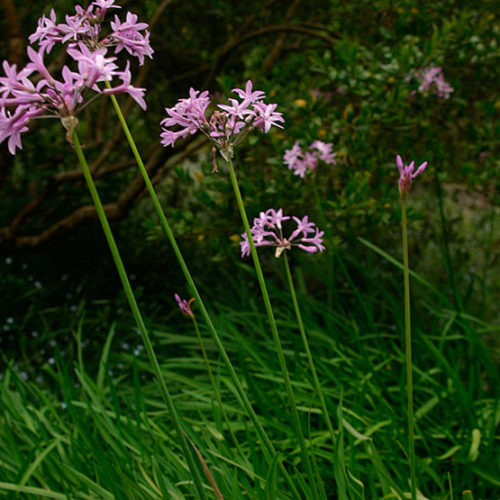Common Agapanthus Issues and How to Address Them
Common Agapanthus Issues and How to Address Them
Blog Article
Opening the Mysteries of Agapanthus: A Comprehensive Exploration of Selections, Growing Methods, and Upkeep Practices

Agapanthus, frequently shrouded in mystery as a result of its varied range of varieties and detailed maintenance needs, emerges as an enigmatic subject for numerous yard lovers. With a multitude of cultivars offered, each boasting special qualities and development practices, recognizing the complexities of these plants can be both rewarding and difficult. As we explore the nuances of planting strategies and look into the necessary maintenance methods necessary to support these stunning flowers, a globe of possibilities unfolds for those looking for to master the art of cultivating agapanthus.
Agapanthus Varieties Demystified
Agapanthus varieties exhibit a varied variety of qualities, making it necessary for gardeners to comprehend the differences in between them for successful cultivation. One of one of the most preferred variations is the Agapanthus africanus, typically referred to as the African Lily. This selection is prized for its striking blue or white flowers and its capability to grow in both containers and yard beds. The Agapanthus praecox, or Blue Lily of the Nile, is another favored choice, flaunting big round collections of white or blue flowers atop tall stalks.
For those looking for a more portable alternative, the Agapanthus 'Peter Frying Pan' is an ideal selection, with its smaller stature and delicate blue flowers. On the various other hand, the Agapanthus 'Tornado Cloud' selection supplies a significant style with its deep purple blossoms and dark vegetation (Agapanthus). In addition, the Agapanthus 'Albus' attracts attention for its pure white blooms, developing a sensational comparison in any type of garden setup
Recognizing these differences can aid garden enthusiasts select one of the most appropriate Agapanthus variety for their details requirements and preferences, ensuring a flourishing and vivid yard screen.
Planting Agapanthus Like a Pro
When growing Agapanthus for optimal development and visual influence, careful attention to soil quality and sunshine direct exposure is critical. Agapanthus flourishes in well-draining dirt with a slightly acidic to neutral pH degree. Prior to planting, amend compressed or heavy dirt with raw material such as compost to enhance drainage and fertility. Pick a growing location that obtains full sunshine to partial shade, as Agapanthus generally prefers a minimum of 6 hours of sunlight daily for robust flowering. When growing, guarantee the crown of the plant rests at soil degree to stop rot and motivate healthy and balanced growth.

Necessary Maintenance Tips for Agapanthus
To make certain the continued health and vigor of your Agapanthus plants, what key upkeep techniques should be focused on throughout the expanding season? Agapanthus plants choose evenly moist dirt yet can endure short periods of dry spell as soon as developed. Agapanthus plants benefit from division every couple of years to stop congestion, improve flowering, and rejuvenate the plant.
Troubleshooting Common Agapanthus Issues
Recognizing and without delay dealing with common concerns that may affect the health and wellness of your Agapanthus plants is important for preserving their vitality and charm. Guarantee your Agapanthus obtain sufficient sunshine, preferably around 6-8 hours per day. By being cautious and dealing with these typical concerns promptly, you can assist your Agapanthus flourish and flourish in your yard.
Making The Most Of Agapanthus Blooms: Professional Approaches
Enhancing the vibrancy and wealth of Agapanthus blooms requires a tactical technique that takes advantage of optimum expanding problems and specialist techniques. To make the most of Agapanthus flowers, start with choosing the ideal range for your region and preferred aesthetic. Agapanthus ranges vary in height, bloom color, and bloom time, so choose one that suits your yard's demands.
Plant Agapanthus in well-draining dirt with sufficient sunlight direct exposure. Normal watering, particularly during the energetic expanding season, is crucial to prevent stress and anxiety and urge flowering.
Fertilize official source Agapanthus with a well balanced fertilizer to promote blooming. Deadheading spent blossoms can reroute the plant's energy right into creating new blossoms (Agapanthus). Divide jammed clumps every few years to invigorate the plant and promote growing
Finally, safeguard Agapanthus from bugs and diseases that can impede flowering. Executing these professional strategies will certainly assist you attain a sensational display of Agapanthus blossoms in your garden.
Verdict
In conclusion, the secrets of agapanthus have actually been introduced via a detailed exploration of ranges, growing strategies, and upkeep techniques. By repairing common issues and executing skilled methods, one can maximize agapanthus blooms and create a spectacular garden screen.

When planting Agapanthus for optimum growth and aesthetic impact, precise focus to soil top quality and sunlight direct exposure is paramount.To plant Agapanthus like a pro, room the plants according to their mature dimension to permit for appropriate air blood circulation and avoid congestion. Agapanthus plants profit from division every few years to protect against overcrowding, boost blooming, and revitalize the plant.In verdict, the mysteries of agapanthus have been introduced through a comprehensive expedition of varieties, planting strategies, and upkeep practices.
Report this page